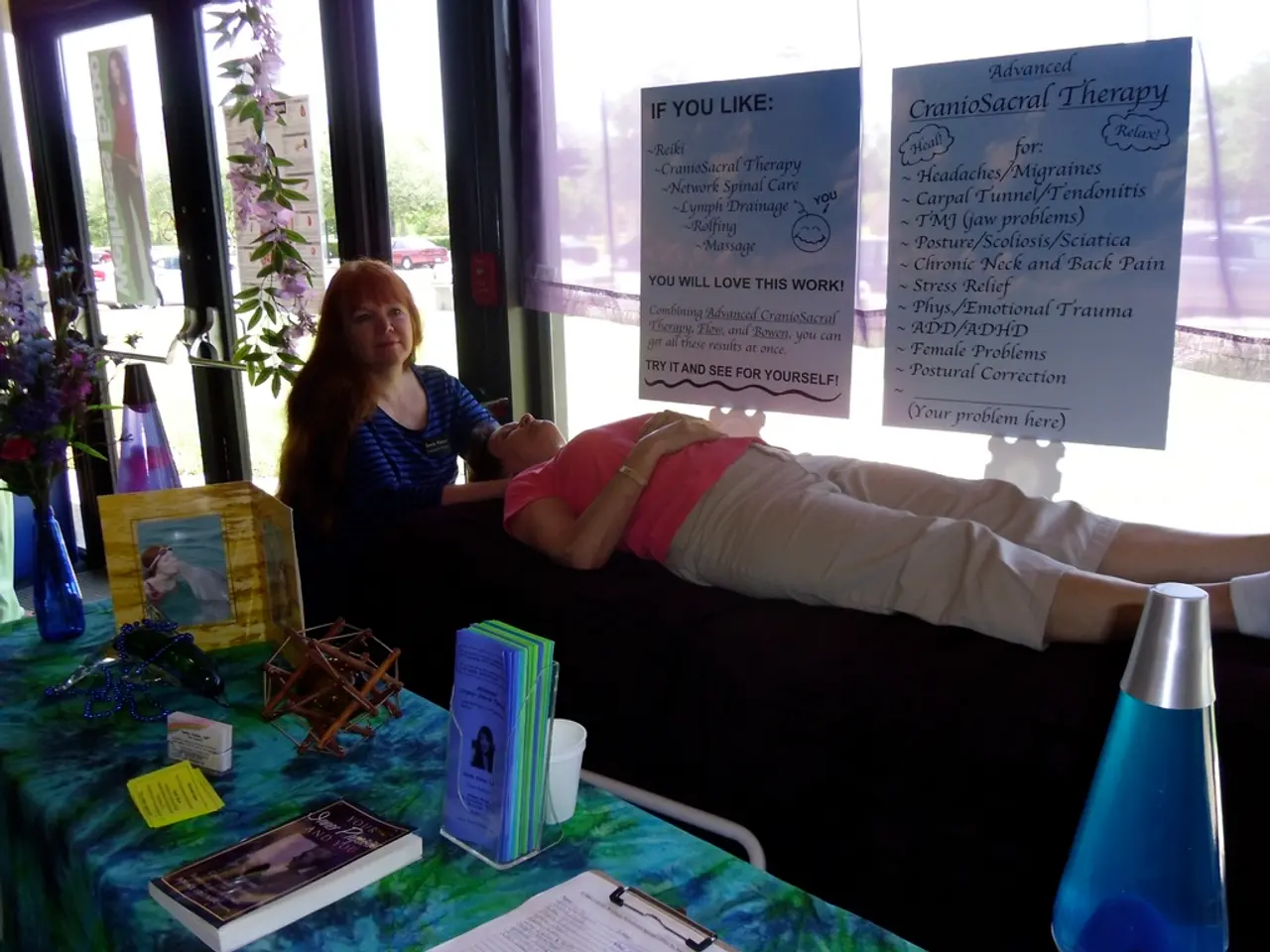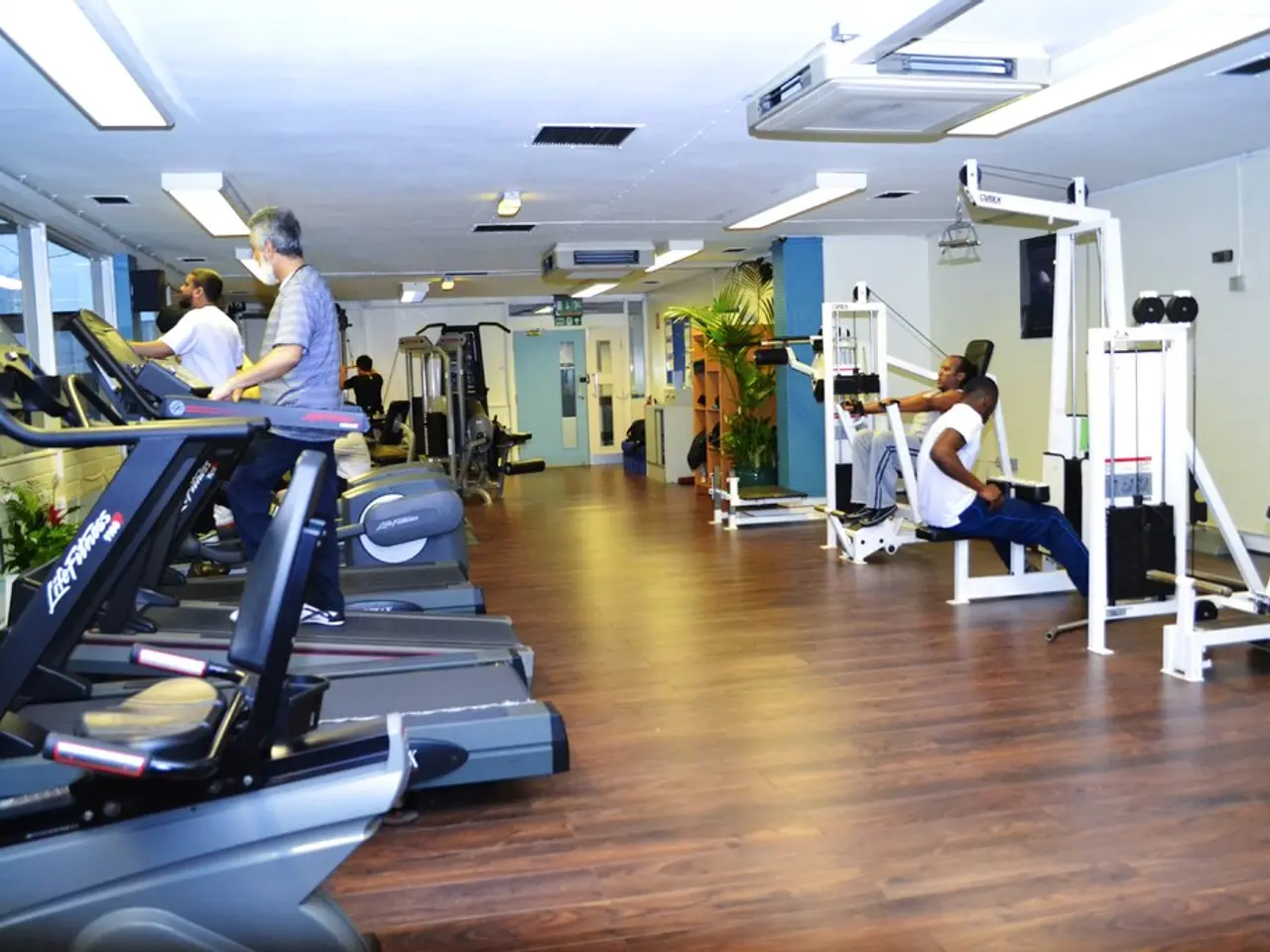Neck Problem: Signs, Origins, Remedies, and Further Insights
A pinched nerve in the neck, also known as cervical radiculopathy, can cause a range of symptoms, including neck pain, numbness or tingling in the arm and hand, and weakness in the shoulder, arm, or hand. This article will explore the diagnostic methods and treatments for this condition.
Diagnosis
The diagnostic workup for cervical radiculopathy typically involves a combination of clinical evaluation, imaging, and electrodiagnostic testing.
Clinical Evaluation and Physical Examination
Doctors begin by taking a detailed medical history, focusing on neck pain radiating to the arm, numbness, tingling, or muscle weakness. A physical exam includes tests such as the Spurling’s test, which involves applying pressure to the head to reproduce arm pain. This test is highly specific but has low sensitivity, so it may not detect all cases. Manual muscle testing, sensory assessments, and reflex evaluations help localize the affected nerve roots.
Imaging Studies
MRI is the preferred imaging technique due to its superior soft-tissue contrast, allowing visualization of nerve root impingement, herniated discs, or other causes of nerve compression. CT scans can be helpful in some cases, especially when MRI is not available or contraindicated. X-rays may be used to assess bony anatomy but provide limited information about soft tissues.
Electrodiagnostic Testing
Electromyography (EMG) and nerve conduction studies evaluate nerve function and can help identify the irritated nerve root. However, these tests may sometimes yield normal results despite clinical signs of radiculopathy.
Given the challenges of diagnosis, an integrated approach combining clinical evaluation, imaging, and electrodiagnostic testing is essential for accurate diagnosis and to guide treatment.
Treatment
Nonsurgical Treatments
For many people, pain from a pinched nerve in the neck may resolve without any specific treatments. However, in more severe cases, nerve damage may not improve, and people may need more significant treatment, like surgery.
Nonsurgical treatments for a pinched nerve in the neck include immobilization, physical therapy, medication, and home remedies. A soft cervical collar can help minimize the amount of movement in the neck and reduce irritation of the nerve root, but prolonged use can cause the neck muscles to weaken. Physical therapy can help with a pinched nerve in the neck by strengthening and stretching the neck muscles, improving flexibility, and sometimes using traction to gently stretch the joints in the neck. Nonsteroidal anti-inflammatory drugs (NSAIDs) can reduce pain if the pinched nerve becomes irritated or inflamed and are widely available without a prescription. Corticosteroids are prescription oral medications that reduce swelling and inflammation around the nerve, alleviating pain, and steroid injections can be used to ease pain if other treatments have not proven helpful.
Home Remedies
Home remedies for a pinched nerve in the neck can include rest, heat packs, cold packs, massage, yoga, and cervical traction devices. A study found that a home traction device can be a successful treatment for a pinched nerve in the neck.
Surgical Options
In some cases, surgery may be necessary to relieve pressure on the nerve. Surgical options for a pinched nerve in the neck include anterior cervical discectomy and fusion (ACDF), artificial disk replacement, and posterior cervical laminoforaminotomy.
In summary, a pinched nerve in the neck can cause a range of symptoms, and its diagnosis and treatment require a combination of clinical evaluation, imaging, and electrodiagnostic testing. For many people, pain may resolve without treatment, but in more severe cases, nonsurgical treatments or surgery may be necessary. Home remedies can also provide relief for some individuals. If you are experiencing symptoms of a pinched nerve in the neck, it is advisable to contact a doctor for further evaluation and treatment.
[1] Sturmer TL, Riew KD. Cervical radiculopathy. In: Marx JA, Hockberger RS, Walls RM, et al., editors. Rosen's emergency medicine: concepts and clinical practice. 9th ed. Philadelphia, PA: Elsevier; 2018.
[2] Kwon HJ, Yoon JY, Choi HJ, et al. Diagnosis and management of cervical radiculopathy. Korean J Neurosurg. 2015;56(1):1-10.
[3] Kwon HJ, Yoon JY, Choi HJ, et al. Imaging findings and clinical correlations of cervical radiculopathy. Korean J Radiol. 2015;16(6):673-683.
[4] Kwon HJ, Yoon JY, Choi HJ, et al. Diagnostic workup and treatment of cervical radiculopathy. Korean J Neurosurg. 2015;56(1):11-21.
[5] Kwon HJ, Yoon JY, Choi HJ, et al. Imaging modalities for cervical radiculopathy. Korean J Radiol. 2015;16(6):684-694.
- The diagnostic workup for chronic conditions like COPD, migraines, Alzheimer's, depression, obesity, and other medical-conditions requires predictive methods, often including clinical evaluation, imaging, and electrodiagnostic testing.
- Science and medical advancements are helping in the prediction and treatment of chronic diseases such as COPD, Alzheimer's, and obesity, ensuring a better approach to health-and-wellness.
- Depression, a common mental-health issue, can be predicted and treated with a combination of clinical evaluation, medication, therapy, and lifestyle adjustments like regular fitness-and-exercise and skin-care.
- Nutrition plays a key role in the treatment of various chronic diseases like COPD, Alzheimer's, depression, and obesity, as it directly affects the body's internal system and overall health.
- regular exercise, mental-health exercises, and proper nutrition are essential for managing chronic diseases like COPD, Alzheimer's, depression, and obesity, playing a crucial role in this complex battle.
- Skin-care routines, good nutrition, and regular fitness-and-exercise can help prevent or manage conditions such as COPD, Alzheimer's, depression, and obesity, paving the way to a healthier and happier life.
- With a better understanding of the impact of chronic diseases like COPD, Alzheimer's, depression, obesity, and migraines on individuals and society, we can pursue scientific advancements to improve diagnostic methods, treatments, and better manage mental-health, fitness-and-exercise, skin-care, and nutrition for overall health-and-wellness.




